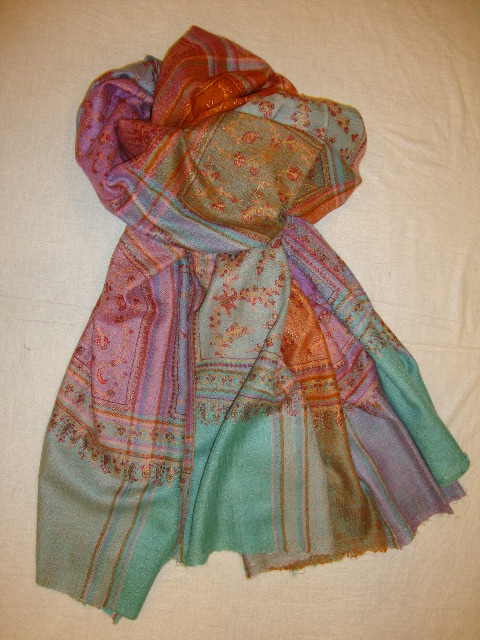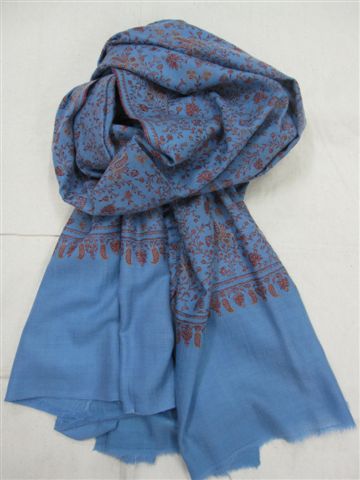
World is full of fabrics, none excels in unique softness quality of texture, and beauty as the pashmina shawl of Kashmir. The Pashmina shawls are soft , light warm and have elegant look and is regarded as a status of symbol by those who admire it, a real pride of Kashmiri Craftsman. This luxurious fibre grows under the coarse and shaggy outer coat of a particular breed of domestic goat capra Hircus which has it's habitat in himalayan region of Tibet, China and Ladakh in Kashmir. This delicate Deer like animal lives at a very high attitude where the winters is severe, the fibre from this handsome animal is used into the making of pashm means the King of wool.

The first task is to get rid it of the coarse hair, This is done by hand, each small tuft of Pashmina being teased out and hair removed one by one in the process a great deal of dust also come out, to rid the pashm of its natural oiliness, it's then thoroughly mixed with flour made from soaked and ground rice, this is applied clamp and rubbed and the pashm is them is then teased out once more, tuft by tuft on a small wooden const.
This ancient treatment of the raw material is still in practice it makes raw wool soft and whiter and the material is ready for spinning on a Kashmir spinning wheel or "Yender", which is made of wool and is about three feet in length with a wheel on one side and thin iron rod about 12 inches fixed in two glass spindles on the other side, It's turned by mean of a handle and another cord passing over the rim transfers the movement from the wheel to the spindle. The yarn mounted on hanks from the pritz, a large reel with a handle, using the simple mean of two large nails set 20 Cms apart in a wooden blank, the banks will be divided into 20 thread bundles tied with colour cotton.
The yarn from the bundles is taken to the weaver who takes week or so to fix the thread of the warp on the loom of a tiny frame made of wood with 4 to 8 slings below the weaver's feet. The welf is made into cones mounted on the straws by using the old tradition of transferring the yarn from the wooden spool to spinning wheel. Now the weavers starts his job of weaving the cloth of shawls on the looms with his hands and feet. A weavers weaves 4 to 6 inches of cloth in a day after bring the cloth from the loom the same cloth is send to washing in a herbal soap of Kashmir in a running waters and then it's dyed by hand and gets ready for embroider, some are just made plain.